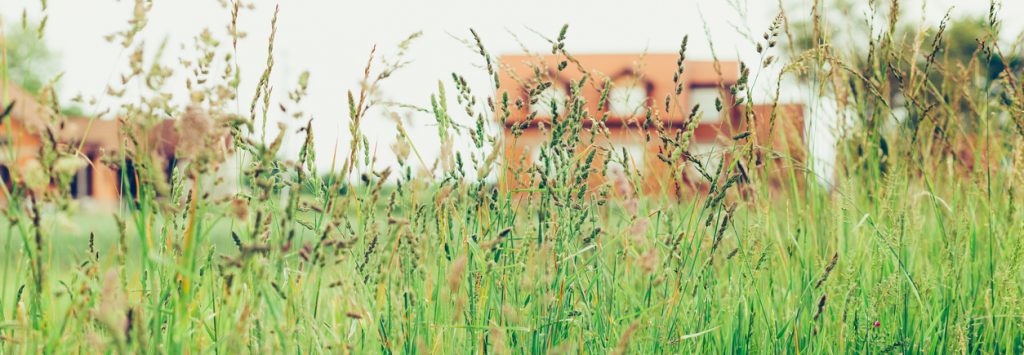Encouraging local wildlife into your garden doesn’t mean letting it get out of hand. There are actually some very simple ways to boost the biodiversity of your garden, rewarding you with a more rich, vibrant space while also providing a valuable home to local nature.
So, let’s take a look at some easy tips on how to make a garden more wildlife friendly.
How to make my garden more wildlife friendly

- Leave holes at the bottom of a fence: To protect the privacy and security of your home, fences are a must. Make sure they are not a barrier to local wildlife by placing a few holes at the bottom of a fence – this allows smaller creatures, such as frogs and hedgehogs to pass through, enabling them to widen their search for mates, shelter and food, which aids their survival. If it isn’t possible to put holes in your current fence, you can always carve out a small fence ‘tunnel’ below a panel for this same purpose.

- Go vertical: Climbing plants and ivy make for a quaint, elegant addition to any garden. But they also serve another important purpose. For example, ivy is very nutritious and a wonderful source of protein, not to mention serving as a year-round habitat. Scented climbers or ones covered in berries can prove very attractive to insects, giving them a space to feed and mate that is protected from the ground.

- Install a pond: All living things need water, and a pond provides exactly this. However, if you don’t have the space or budget to install a proper pond, a smaller makeshift one will also do just fine, such as a shallow container or basin. Ensure that it has twigs and stones placed in the water so that creatures can ease themselves in and out. Rainwater is the ideal filling for a pond, and you may also wish to keep it out of direct sunlight and grow oxygenating plants in it to prevent the pond from getting smelly or stagnant.

- Insect hotel: While creepy crawlies aren’t everyone’s cup of tea, they do wonders for the health of a garden. Encourage them to drop by by setting up a special insect hotel. This is especially fun if you have young kids – use rocks, wood, bricks, leaves and any other materials you have available to create a special shelter, or hotel, for insects. Then leave well alone, allowing your insect guests the peace and space to visit and thrive.

- Install bird boxes to your fence: The sights and sounds of birds are relaxing and make for a healthier, more interesting garden. Encourage them to visit by installing bird boxes to your fence posts, putting them high enough out the way of ground-dwelling predators. Make sure your fence panels have been provided by a high-quality supplier, such as Harrow Fencing, so that you can be sure of their stability and sturdiness when affixing the bird boxes. For more information on which bird boxes or feed to use, visit your local garden centre or the RSPB website.

- Full of flowers: It will be no surprise that a diverse variety of flowes will attract a whole host of insects and birds to your garden – while also making your outdoor space a prettier, more colourful place to spend time. Be wary that lots of petals doesn’t always equal an easier nectar spot for insects, so make sure you research pollinator-friendly plants to ensure you’re providing the most benefit.

- Lay off the mower: While it might be tempting to have a perfectly clipped lawn all year round, this actually doesn’t do any favours for wildlife. Longer grass is actually a wonderful habitat for butterflies and wildflowers – and you may be surprised by the interesting visitors you get when leaving the grass to grow. Only mowing every four weeks can also boost the nectar production of your garden by allowing flowers to bloom in your grass.
If you’re searching for high-quality fencing in London, Harrow or Hillingdon, we’re here to help. The team at Harrow Fencing have over 60 years’ experience as the area’s leading stockist and installer of fence panels for homes and business. We can also supply sheds, summerhouses and metal security fencing. Just get in touch to find out more.


